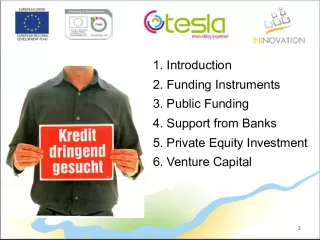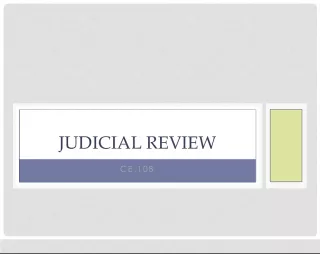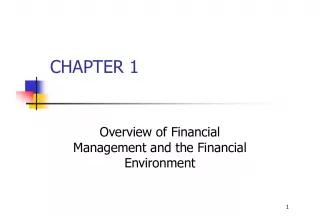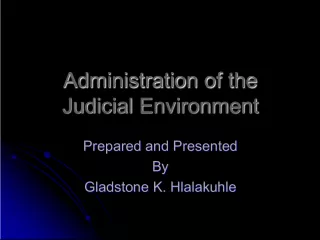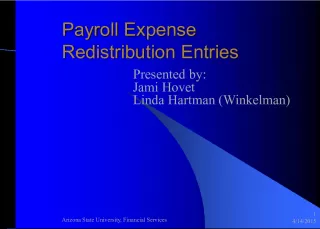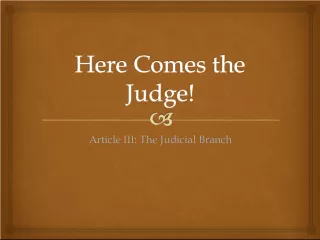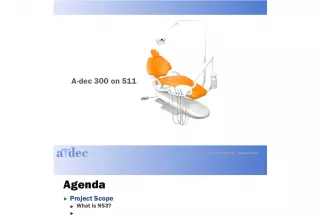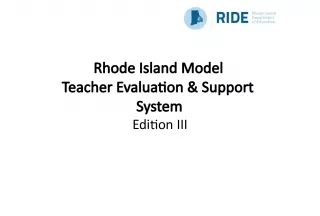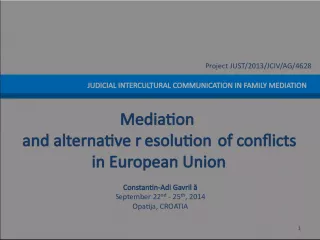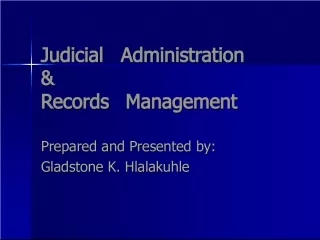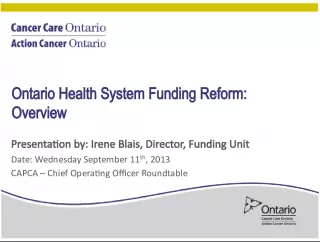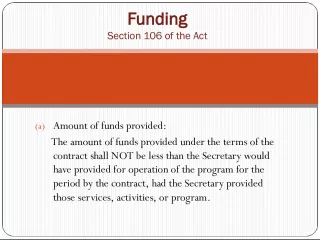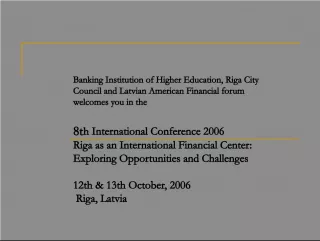Prioritizing EU Funding for Financial Support and Judicial Training


This article discusses the priorities of future EU funding in the programming period of 2014-2020, specifically focusing on financial support and judicial training. It covers key topics such as stimulating European judicial training, promoting effective justice growth, and more efficient enforcement of EU law. Additionally, it examines stakeholders, overarching targets, and approaches for funding.
- Uploaded on | 0 Views
-
 birdie
birdie
About Prioritizing EU Funding for Financial Support and Judicial Training
PowerPoint presentation about 'Prioritizing EU Funding for Financial Support and Judicial Training'. This presentation describes the topic on This article discusses the priorities of future EU funding in the programming period of 2014-2020, specifically focusing on financial support and judicial training. It covers key topics such as stimulating European judicial training, promoting effective justice growth, and more efficient enforcement of EU law. Additionally, it examines stakeholders, overarching targets, and approaches for funding.. The key topics included in this slideshow are EU funding, financial support, judicial training, EU integration, efficient enforcement, mutual trust,. Download this presentation absolutely free.
Presentation Transcript
1. www.era.int Financial support and the new programming period 2014-2020 Breakout group 2A: Priorities of future EU funding What to fund by the EU? Dr. Wolfgang Heusel Stimulating European Judicial Training 1
2. www.era.int Judicial Training: What to fund by the EU? A. Approach and stakeholders I. Overarching targets: 1. more effective EU integration 2. more efficient enforcement of EU law (European area of justice) 3. stimulating mutual trust and business (promoting effective justice & growth) 2
3. www.era.int Judicial Training: What to fund by the EU? A. Approach and stakeholders II. Stakeholders 1. EU institutions: EP, COM, ECJ 2. Member states (judicial authorities courts, judicial councils or administrations, minis-tries; bars; professional associations) 3. Target groups (recipients of training) 4. Training providers 3
4. www.era.int Judicial Training: What to fund by the EU? A. Approach and stakeholders III. Suggested methodology: 1. Defining needs (incl. what cannot be /is not done at national level) 2. Defining objectives (cf. Stockholm context) 3. Considering means and tools 4. Choosing perspective and setting priorities 4
5. www.era.int Judicial Training: What to fund by the EU? B. Determining training needs driven by supply or demand? I. Starting point: decentralised appli- cation of EU law; every judge an EU judge, every law practitioner an EU lawyer II. Needs defined at ground level vs. needs defined at top level Needs awareness vs. objective needs 5
6. www.era.int Judicial Training: What to fund by the EU? B. Determining training needs driven by supply or demand? III. Needs indicators 1. Studies (Wallis 2008; EP 2011; Pilot project to come) 2. EU law implementation reports 3. Feedback from practice 4. Monitoring new legislation and case law 5. Justice scoreboard 6
7. www.era.int Judicial Training: What to fund by the EU? C. Target groups of EU-funded training 1. Judges and prosecutors 2. Lawyers in private practice and notaries 3. Court clerks and bailiffs (Rechtspfleger and Gerichtsvollzieher?) 4. Trainers (multipliers) or end-users Needs vary according to target group 7
8. www.era.int Judicial Training: What to fund by the EU? Defining needs (1): Target groups of EU-funded training 1. Judges and lawyers in private practice All areas of EU law, depending on specialisation 2. Prosecutors and notaries Special areas of EU law (crim.; family; PIL; ) 3. Court clerks and bailiffs Limited areas related to their competence 4. Trainers (multipliers) or end-users All areas of EU law; training methodologies 8
9. www.era.int Judicial Training: What to fund by the EU? D. Factors determining participation in EU training 1. Practical relevance 2. Accessibility (timing, place, language, costs) 3. Time available (workload, authorisation and appreciation by superiors) 9
10. www.era.int Judicial Training: What to fund by the EU? Defining objectives (1): Factors determining participation Training offered must be - practice-oriented (motivation of trainees) - accessible in time (early warning) and place - accessible in language (active command) - accessible cost-wise (free for judicial staff) - short-time (lawyers: time as cost-factor; judicial staff: workload and backlogs) - recognised as professional task and duty 10
11. www.era.int Judicial Training: What to fund by the EU? E. Contents and level of EU-funded training 1. Fundamentals of EU law : General principles, legal acts, fundamental rights, fundamental freedoms, non- discrimination, identification of applicable EU law (sources and interpretation) 2. Fundamental EU judicial procedures : Preliminary rulings, judicial cooperation acquis (civil, criminal, other), mediation, use of European judicial networks 11
12. www.era.int Judicial Training: What to fund by the EU? E. Contents and level of EU-funded training 3. (Any) specific area of substantive EU law : Competition, environment, tax, trademarks and IP, asylum, telecommunications, labour, consumer, company, data protection, CFR, 4. Member states law : - Legal and judicial order - Procedural law 12
13. www.era.int Judicial Training: What to fund by the EU? E. Contents and level of EU-funded training 5. (Legal) language training and other skills (one? several? all official languages?) 6. Non-legal topics (e.g. ethics) 7. Training methodologies 8. Basic training / Initial training 9. Advanced / continuous/ expert training 13
14. www.era.int Judicial Training: What to fund by the EU? Defining needs(2): Contents of EU-funded training 1. No need for fundamental EU law training at EU level (national priority) 2. High need for cross-border training on judicial cooperation acquis 3. On-going need for continuous updating in all specific areas of EU law 4. Limited need for training in member states law (little practical relevance) 14
15. www.era.int Judicial Training: What to fund by the EU? Defining needs(3): Level of EU-funded training 5. Objective need for fluency in one common language 6. Arguably, limited need for EU training on other skills or non-legal topics 7. Limited need for EU support for basic train- ing (national priority; exception new M St) 8. Obvious need for EU support for cross- border elements in initial and joint training activities for expert practitioners 15
16. www.era.int Judicial Training: What to fund by the EU? Defining objectives (2): European added value European added value may be achieved - Within a national context : to provide basic or advanced knowledge, or skills, in applying EU law where national training is not available - In a cross-border context : to promote networking, to build trust, to exchange pro- fessional experience, to learn from each other N.B. European added value does not depend on the number of member states involved. 16
17. www.era.int Judicial Training: What to fund by the EU? F. Size of EU funding for training 1. Small-scale projects 2. Large-scale projects G. Innovation and sustainability 1. Innovation vs. repetition of good practice 2. Dissemination of results 3. Sustainability at the level of (a) trainees (b) trainers (c) training providers 17
18. www.era.int Judicial Training: What to fund by the EU? Considering means & tools (1): - Size of EU funding Small-scale projects increase administrative burden of COM, but likely to be more targeted and possibly more committed - Innovation and sustainability - Insisting on innovative projects limits scope of training activities: innovation no per se value - Dissemination and sustainability depending on form of training 18
19. www.era.int Judicial Training: What to fund by the EU? H. Forms of EU-funded training 1. Exchanges 2. Curricula 3. Training modules (for trainers and end-users) 4. Face-to-face (lectures, workshops, role plays, etc.) 5. Distance learning (e-learning courses, podcasts, webinars) 6. Regular conferences to identify needs and best practice 19
20. www.era.int Judicial Training: What to fund by the EU? Considering means & tools (2): Forms of EU-funded training 1. Exchanges excellent for building trust, for knowing each others system and forming a common spirit 2. Curricula and training modules only useful - if regularly updated - as far as taken up by target groups 20
21. www.era.int Judicial Training: What to fund by the EU? Considering means & tools (3): Forms of EU-funded training 3. On-going relevance of face-to-face because of direct exchange; but need for more interactivity 4. Webinars =face-to-face on distance, with quantity advantage and quality disadvantage 5. Relevance and uptake of e-learning courses and podcasts still being explored; unlimited multiplicability, but need for updates 21
22. www.era.int Judicial Training: What to fund by the EU? I. Suggestions from the EP study 1. Provide newsletter with regular updates on developments in EU legislation and case-law 2. Promote use of European Judicial Networks 3. Provide funding for language training 4. Provide funding for multilingual training 5. Invite stakeholders to regular forums to highlight best practice in judicial training 6. Provide funding for decentralised training 22
23. www.era.int Judicial Training: What to fund by the EU? I. Suggestions from the EP study 7. Provide funding for training for hitherto neglected professional groups 8. Provide for a scholarship fund to attend European trainings when national funds are unavailable 9. Provide funding for distance learning 10. Provide funding for training materials that can be re-used at local or national level 23
24. www.era.int Judicial Training: What to fund by the EU? I. Suggestions from the EP study 11. Provide funding for projects that promote more active and practical forms of training 12. Update the EP study on judicial training at regular intervals 24
25. www.era.int Judicial Training: What to fund by the EU? J. Choosing perspectives and setting priorities 1. Funders perspective (EU actors) prevails: fair enough 2. Effectiveness of funding however only guaranteed if based on end-user perspective 3. Setting funding priorities a moving target Many thanks for your attention! 25
